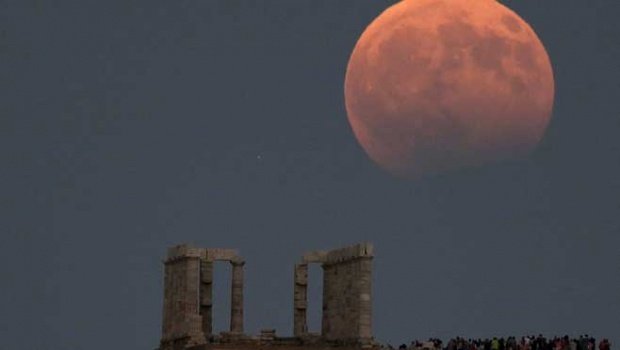
January sky observers will get a special treat; Blue Moon, total lunar eclipse and one supermoon in the same month.
Blue Moon is when two full moons occur in the same calendar month, the lunar eclipse occurs when the moon enters the shadow of the earth, and the supermoon occurs during the perigee of the moon - its closest position to Earth in a single orbit - which coincides with the full moon. in this January case, supermoon also happens to be the lunar eclipse day.
The first full moon of January takes place on the night of January 1 or the morning of January 2, depending on your location. the second full moon and lunar eclipse will occur on the night of January 31st or the morning of February 1st. While the supermoon will take place on the night of January 30, which is technically one day before the moon reaches a peak.
the real star of three shows for the moon watcher is the lunar eclipse on January 31st. Supermoon will happen on January 30th at 4:58 am EST. (4:58 pm WIB). the moon will reach 223,068 miles (358,994 kilometers) from Earth, compared to an average distance of 238,855 miles (384,400 km), according to NASA.
Although the supermoon does look a bit bigger in the sky than the full moon that happens when the moon is far away from us in its orbit, the difference is almost impossible to be a concern for most sky watchers because the moon is very bright and maybe the moon-size difference is visiblesmall (only about 14 percent), according to NASA.Unlike the solar eclipse, which is only visible from certain places on Earth, the lunar eclipse is visible from anywhere at night. lunar eclipses do not occur every month because the orbital plane of the moon is slightly skewed towards the earth's orbital plane, so Earth, sun and moon do not always line up to place the moon in the shadow of the earth. for the January 31 lunar eclipse, viewers in some places will not be able to see the whole event as it starts near when the moon rises or the moon sets. While the lunar eclipse is only visible on the night side of Earth.
observers in New York City will see the moon enter the earth's penumbra (the lighter and the outermost part of its shadow) at 5:51 am on January 31st. Penumbra darkens the moon just a little. the moon will touch the umbra, the dark part of the shadow that gives the eclipse a moonlit and darkening look, at 06:48 local time. But the moon sets 16 minutes later, so New York can only see the first eclipse. to see as many eclipses as possible, you must be near a flat western horizon.
As one walks west across the Pacific, a lunar eclipse will occur early in the evening. sky watchers in Hawaii will be able to see the whole from start to finish, as Alaska people and viewers in East Asia and Australia will do.
On January 31st, people in Tokyo will see the lunar eclipse penumbral phase starting at 7:51 pm local time. umbra will touch the moon at 8:48 pm, and the maximum eclipse will be at 10:29 pm. At 11:07 PM, the moon will reach the opposite side of the umbra, and at 12:11 AM on the first of February the moon will appear and enter the penumbra. at 01:08, the eclipse will end for viewers in Tokyo.
People in Eastern Europe and western Asia will see something like an eclipse mirror image that observers will see in America, because the eclipse will begin before the moon rises.